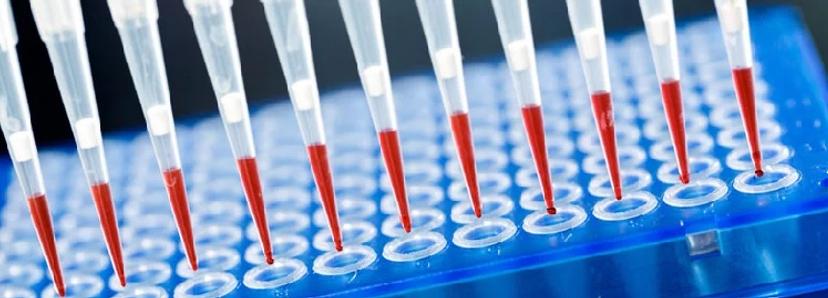8 Ways Your Pipette Tips Might be Holding You Back
Your pipette tips really can damage your experimental results – but the good news is that with expert insight and the right technologies, all these challenges can be overcome
27 Sept 2018
Up until now you’ve probably never stopped to consider the exquisite engineering that goes into pipette tip design and, whilst multiple potential sources of error exist in molecular assays, tip-related inaccuracies are often overlooked. With help from tip expert and Senior Product Manager at STARLAB, Dr. Lennart Walter, we discover eight ways your tip technology can negatively impact your experimental results — and solutions to those potential problems.

1. Fine Aerosols
For ultrasensitive molecular assays, such as those involving the use of nucleic acids or clinical material, filter tips serve to reduce both aerosol and liquid contamination of the pipette and sample from prior pipetting activities. However, the filtration capabilities between filter tips available on the market vary considerably.
“Direct sample contamination can occur when particulates pass through the filter material, whilst indirect contamination refers to the lodging of contaminants onto the pipette wall, that subsequently mix with your sample,” says Walter. “With STARLAB’s TipOne® filter tips, we have been able to achieve blocking of more than 99% of fine aerosols from your sample — a true accomplishment in the tip industry.”
2. Contamination
The material of the filter should be an inert polymer, devoid of additives that may interfere with your sample. As Walter explains, “a number of studies have shown self-sealing filters with cellulose gum sealing additives have been proven to negatively influence PCR and qPCR results, due to material particles falling in to the sample, whilst those made from high-density polyethylene provide a much lower risk of sample interference.”

3. Sample Loss
To maintain fluid integrity and prevent contact with the filter, some conventional tips contain self-sealing filters. However, this approach may cause the loss of valuable sample, particularly in proteomic or clinical applications, since the liquid is not recoverable once trapped.
To address this, TipOne filter tips have a superhydrophobic polymer surface to ensure samples are fully recoverable, without risk of contamination. If unintentional contact occurs between sample and filter, aspirating air for example, the integrity of the sample is not compromised.
4. Sample Retention
When working with low volumes, it is important to prevent sample retention for experimental accuracy and to minimize reagent waste. “I’m sure nearly everyone can relate to the expensive enzyme running empty before everything else in a pre-prepared kit, and difficulty working with sticky liquids or samples with a tendency to foam,” Walter remarks.
In STARLAB’s quest to find a solution, Walter explains that they have a range of TipOne tips configured with the unique ‘repel polymer technology’ (RPT) based on a concept termed molecular hydrohpobising. “The super-hydrophobic surface material is covalently bonded to the tip polymer, and the molecular end groups are orientated in a regular manner for consistent surface tension, that is three times less than that of conventional tips. This makes working with sticky liquids and with samples with a tendency to foam, so much easier.”
5. Leaching
Although most conventional tip ranges encompass tips with low retention effects, common methods to achieve this involve additives to form a hydropphobic surface (either by coating or mixing with the resin). Studies have shown this can negatively impact on experimental results if additives bleed into, and contaminate, the sample. STARLAB’s low retention (RPT) tips contain no additives and therefore no leaching can occur. Your sample is safe!
6. Sample Hang-Up
To pipette down to the last drop, the geometry of the tip orifice is critical: the lower the wall thickness, the less sample hang-up. Yet, thinner walls increase the susceptibility of the tip acquiring a non-coaxial shape before or after autoclaving. High technology injection moulding processes to accomplish a thin but robust structure requires thoughtful engineering and is not something that every manufacturer has achieved.
“STARLAB is able to manufacture tips with one of the lowest of wall thicknesses and sample hang-up volumes in the industry, avoiding the banana-like deformity before or after autoclaving,” says Walter.
7. Loading and Ejection Forces
Minimizing loading and ejection forces can have dramatic effects on the consistency of your liquid handling. When asked to explain further, Walter responds: “Ergonomic pipetting can be achieved by increasing the flexibility of the tip to improve the seal around the pipette. The flexibility of STARLAB’s pipette tip collar is due to its thin-wall technology and unique geometrical design. This ultimately enables the user to gently apply the pipette tip and handle samples with minimal force.”
8. One Tip for All
The use of tips from multiple manufacturers could provide discrepancies in your results. A ‘one tip that fits all’ solution, therefore, not only improves your experimental accuracy, but also makes life a lot easier for the lab managers in charge of sourcing and supplying consumables.
“It’s a pity it was only after I had left the lab that STARLAB launched TipOne, the ‘one tip for all pipettes’ solution, and this remains the company’s core feature.” Walter says. He goes on to add: “It’s also extremely difficult for manufacturers to achieve complete tip-to-tip uniformity when you’re dealing with this type of technology, but this is something STARLAB have managed to achieve as well.”
Plus, in celebration of its 20th year of TipOne manufacture, all orders placed in 2018 receive their tips packaged in golden boxes! View the TipOne® tips here.
